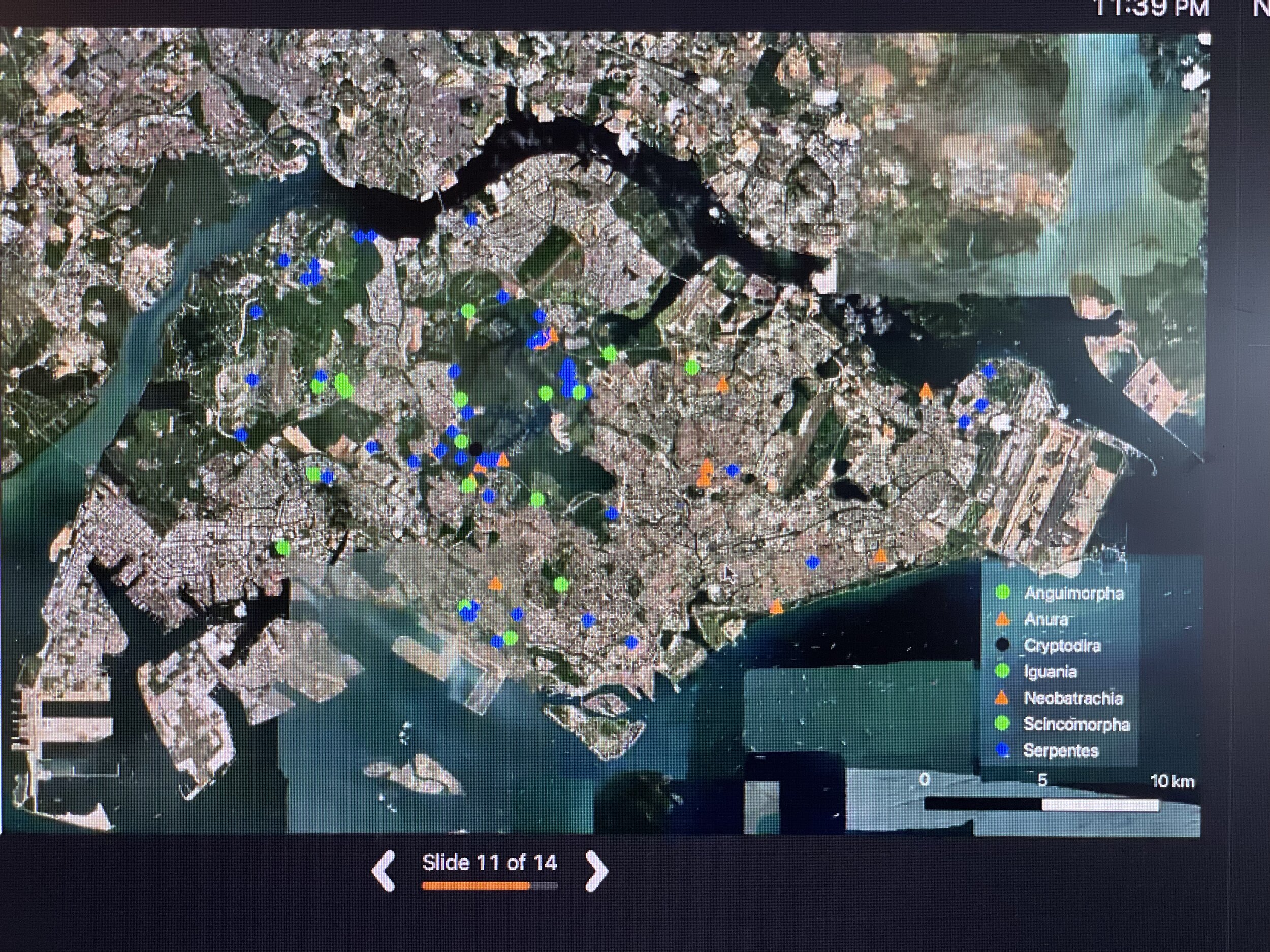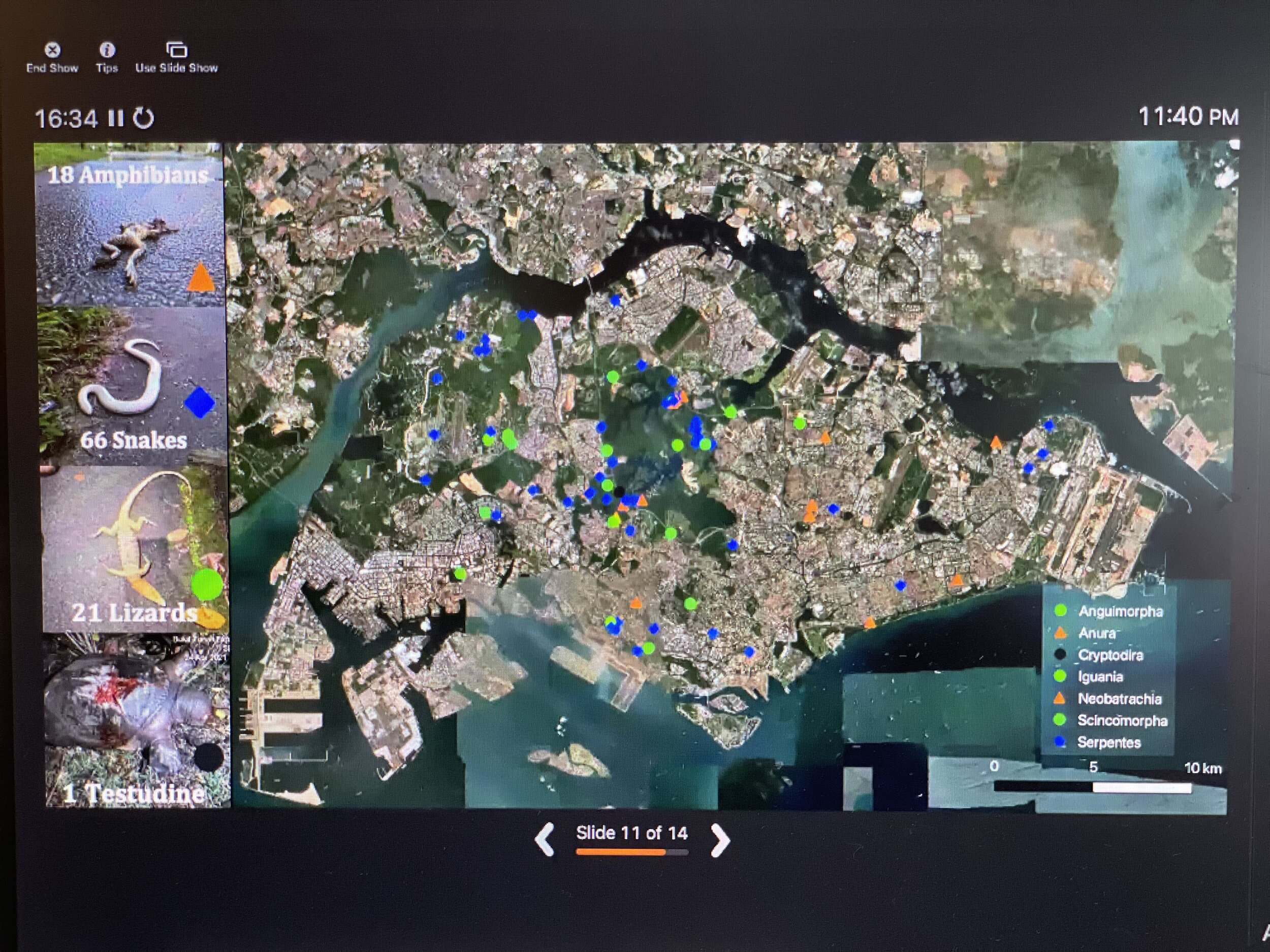TetZoo(M)Con 2021
Last year I, unfortunately, had to miss the first ever online version of TetZooCon – or TetZoomCon. However, this year, I don’t think much could keep me from attending! I took the day off from work and planned a visit to one of the current exhibitions at the Natural History Museum in London in the morning (more on that on a separate post) followed by an afternoon/evening of TetZoo inspired talks.
Darren Naish (Mr TetZoo himself if you don’t already know him) mentioned that this is the 16th year of the TetZoo blog and I can only be thankful that he and John Conway continue to put these events together! TetZooCon events aren’t just educational and informative, they are also incredibly inclusive and I trully appreciate that!
My posts on previous TetZooCon events are always pretty lengthy, and this one is a bit late, so let’s just get into it!
Amazing art by Mark Simmons (@toysdream on twitter)
It is no secret that the conservation of amphibians and reptiles is an important part of my own studies, which is why the first talk was such a treat! Kannan Raja (@JKannanR on twitter) kicked things off with his aptly named presentation “Your Carma Ran Over My Frogma” in which he talked about wildlife-human interactions in Singapore, the importance of citizen science and the herpetofauna of Singapore. Raja described the work that a volunteer group of herpetology enthusiasts and experts are carrying out with The Herpetological Society of Singapore using citizen science to help mitigate wildlife-vehicle collisions (WVCs). He mentioned that despite its small size, there is a car for every 6 people in Singapore and so roadkill is, unfortunately, an issue on the island. Additionally, roadkill may also happen off main roads such as on biking trails and walking paths due to the use of e-scooters, bikes, etc.
A screenshot of one of Kannan’s slides during his talk.
As he described, herps are often underrepresented due to their small size (not always) and fragile bone structure. The study helps them gather data that may benefit the conservation and biodiversity of the local herpetofauna by:
Identifying potential hotspots for localised extinction threats;
Potentially showing new species that may have not yet been recorded;
Identifying potential invasive species (often due to the pet trade industry);
Reducing the impact of WVCs on local wildlife via the use of green bridges but also small tunnels;
Raising public awareness and education;
So far they have collected about 6 or 7 months of data but certain trends have already been identified, such as roadkill hotspots being located around nature reserves and the fact that most herps being reported are snakes.
His talk reminded me of Amy Schwartz’s talk on Project Splatter in the 2019 version of TetZooCon, which is a similar citizen science project on roadkill reports but UK-based. Citizen Science projects are a great way of involving and reaching the general public. He also mentioned the measures they have implemented for when the animal reported is only injured and it’s people like him that restore my faith in humanity sometimes!
Amazing art by Mark Simmons (@toysdream on twitter)
The second talk was by the brilliant Riley Black (@Laelaps on twitter) who has written for an impressive list of scientific publications. Her talk at TetZoomCon 2021 focused on Patriofelis ulta, which is an oxyaenid creodont that I had honestly not heard much about before. Interestingly, these weird cat-like predatory mammals were, at times, thought to live an otter-like lifestyle but I believe the idea has since been discarded.
Black drove our attention to a skeleton discovered in Wyoming in 1953 that included a well-preserved full skull that hinted at powerful jaw muscles and incredible canine teeth that showed some serious signs of being worn-down in life. This brought the question of what exactly was it eating for the teeth to show so much wear? Black then pondered on the bridger formation deposited during the early Eocene and the abundance of turtles as potential prey. She also drew a parallel to the skull of jaguars and their diets. If Patriofelis were preying on turtles that could potentially explain the wearing of the teeth? More testing and research is certainly needed and there’s some hope that dental microwear could reveal more.
A screenshot of one of Riley’s slides during her talk.
One of the pretty cool Eocene puzzles from the mess left behind by the bone wars, I guess!
Amazing art by Mark Simmons (@toysdream on twitter)
Francois-Louis’ talk focused on the Beast of Gevaudan, which I always thought of as the “French Loch Ness Monster” (I’m not sure French people would like that – sorry!!!) but I had never actually thought about trying to pin down the likely species involved in the attacks. Someone suggested in the live chat during the presentation that the mystery was solved because it was actually Patriofelis, which did make me giggle. Wish I could give the person credit but I cannot remember who said it!
One of the slides taken from Francois-Louis Pelissier’s presentation.
On a serious note, considering how the diversity and taxonomy of wolves is pretty controversial as it is, it is not wonder that stories of “the beast” would formulate and change based on different accounts.
Amazing art by Mark Simmons (@toysdream on twitter)
Ok, so I have to be honest and say that I was slightly skeptical of Duane Nash‘s talk at the beginning (@DuaneNash5 on twitter). I didn’t really know what to expect and I was worried it was going to be another pseudo-science disaster ‘Peters-style’. The section where he mentioned ‘dinosaurs back to water’ gave me Ford flashbacks and I was sort of dreading it. However, I was very wrong. This was nothing like Peters or Ford and I was immensely amused when he used terms like “negatively buoyant”. I didn’t think that any of his ideas were too controversial or completely unrealistic – there is the *small* issue of most not being able to be tested (at least not yet) and I like that he seems to be genuinely open to his ideas being tested and proven or disproven rather than saying he is and then ignoring evidence completely as some people do *cough* you know who I’m talking about *cough*. I also agree with his comment that palaeo artists aren’t shone to light enough and that there’s so much “untapped” talent out there – which led to the discussions around open science. It felt as though he was pushing the boundaries of paleoscience without disregarding the science which is a balance others are lacking *cough* you know who I’m talking about again *cough*.
Amazing art by Mark Simmons (@toysdream on twitter)
The discussion between Duane and Darren was really engaging – the issues of credit and collaboration are important topics that need to be reviewed/changed. The discussion also gave rise to some pretty memorable memes…just check out the header image of this post and the #tetzoomcon hashtag on twitter.
Amazing art by Mark Simmons (@toysdream on twitter)
Dr Elsa Panciroli‘s talk caught me completely by surprise and blew my mind – not only because of its content but also because of its message. She (@gsciencelady on twitter) talked about her most recently published book “Beats Before Us” which I will be reviewing in a separate post. This is because I was too tempted during her talk and was left with no choice other than to buy it! Therefore, I won’t go into too much detail on this post but will rather show my appreciation for the sections of her talk that stuck with me:
➜ This simple yet effective graph and a shoutout to the cute Gorgonops (love them)
Slide from Dr Elsa Panciroli’s presentation.
➜ Her drawing attention to the “mammal-like reptile” language that I believe is thankfully no longer in use in recent books but the message is an important one.
➜ Mesozoic mammals being used as “popcorn” for dinosaurs and not receiving enough media attention, often being overlooked as inconsequential but being key to the emergence of mammals in the scene.
➜ The “mammals didn’t evolve from reptiles” message.
Slide from Dr Elsa Panciroli’s presentation.
➜ Emphasising the cyclic nature of eco-systems: Permian proto-mammals already filled many of the same ecological roles that extant mammals do nowadays.
➜ A direct quote of hers during the presentation “In order to tell new stories, new layers need to be brought to life” where she brings to light other people such as women and people of colour that may have been overlooked at some point such as Zofia Kielan-Jaworowska and her colleagues in this photograph:
Crop from one of Dr Elsa Panciroli’s presentation slides.
➜ Credit to indigenous peoples and their discoveries and interpretations of fossils prior to white-men-discoveries, i.e. dimetrodon bones being discovered by indigenous tribes before Cope “discovered” it.
➜ Reference to Cope being a horrible racist and the Marsh/Cope pettiness.
➜ Lastly, the really cute illustrations created by April I. Neander (@aineader on twitter) that are included in the book.
Science and social justice, what more could you ask for? I’m sold.
Amazing art by Mark Simmons (@toysdream on twitter)
To wrap things up (at least when it comes to the talks) we had Dr Darren Naish (@tetzoo on twitter) covering speculative evolution with Russel and Seguin’s Dinosauroid. It feels weird to write a summary of Darren’s talk considering that he just wrote a new piece on it on the TetZoo blog called “Humanoid Dinosaurs Revisited Again: Russel and Seguin’s Dinosauroid at (Nearly) 40 Years Old” so I would highly recommend that you read that! I think Russel’s personal views and beliefs make it quite probable that his ideas for the Dinosauroid were driven by religion and creationism.
After the talks, the Paleoart workshops took place and if I had even an inkling of artistic finesse, I would most certainly have attended it. Alas, I am completely deprived of any artistic skills so I am just left to look, admire and appreciate the amazing talent of the palaeo artists that attend TetZooCon.
As always, TetZooCon was an absolute pleasure and I look forward to the next one – be it in person or virtual!




















